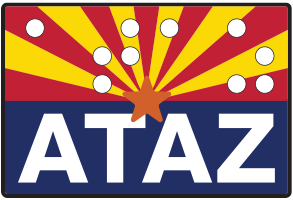Useful links PDF version 455kb, 1 page
Overview
Language is the foundation of communication. It can be:
- auditory – spoken words or output from a speech generating device (SGD)
- visual – written or manual language system such as ASL (American Sign Language) or
- tactile - Print On Palm or tactile sign language
Communication partners must have a shared understanding of the symbols and meanings in the language system. Communication is typically measured in terms of “expressive” and “receptive” language. This means how well we comprehend language expressed by others (receptive) and how well we respond to or initiate (expressive) language ourselves. Augmentative and Alternative Communication (AAC) is “…communication methods used to supplement or replace speech or writing for those with impairments in the production or comprehension of spoken or written language” (per Wikipedia). Language systems may be aided (devices) or unaided (gestures, facial expressions and manual signs such as American Sign Language - ASL).
Medical Aspects
There are numerous medical conditions that can result in speech disorders. These include: CP (Cerebral Palsy), ALS (Arterial Lateral Sclerosis also called, “Lou Gehrig’s Disease”), medical issues with the throat or other speech production anatomies, TBI (Traumatic Brain Injury), etc. Specialists include ENTs (Ear, Nose and Throat Doctors) for anatomical corrections and Speech Language Pathologists whose practice includes the specialty area called AAC (Augmentative and Alternative Communication). If the person’s motor skills are also compromised, an OT (Occupational Therapist) or PT (Physical Therapist) may also need to be involved to address seating, positioning and device portability. An Assistive Technology Specialist may also need to be part of the team to broaden the use of the AAC device to employment applications and computer access.
Assistive Technology
Persons with speech disorders may benefit by using an AAC system. This may be low tech (i.e. picture cards or grid) or an electronic device with speech output. Many devices use pictures or icons to efficiently store language and selections, along with other rate enhancement techniques. In addition to AAC, treatments for speech impairments may include technologies to improve fluency (stuttering) and personal devices to address speech volume. Fluency (stuttering) may be aided by a device that echoes speech back to the communicator as they are speaking. Small, portable voice amplifiers can increase compromised volume. Speech is often addressed in terms of familiar and unfamiliar communication partners. The ability to spell determines whether the device will have digitized (recorded) speech vs. text to speech synthesized devices. Many systems integrate with or actually are computers which support education and employment.
Assistive Technology to support Cognition Function
Low Tech AAC:
- Miniature objects
- Picture exchange:
- Cards/books with photos/icons/words
Speech Generating Devices:
- Digitized Speech – recorded messages
- Synthesized Speech – can type text – device will voice words/sentences
*note: these may be dedicated devices or apps for mainstream mobile devices
Fluency Aids:
- Altered Auditory Feedback (AAF) i.e. “SpeechEasy”
Amplification:
- Personal Voice Amplifiers
 ATArizona.com
ATArizona.com 